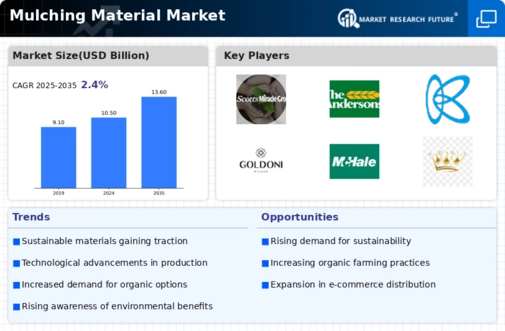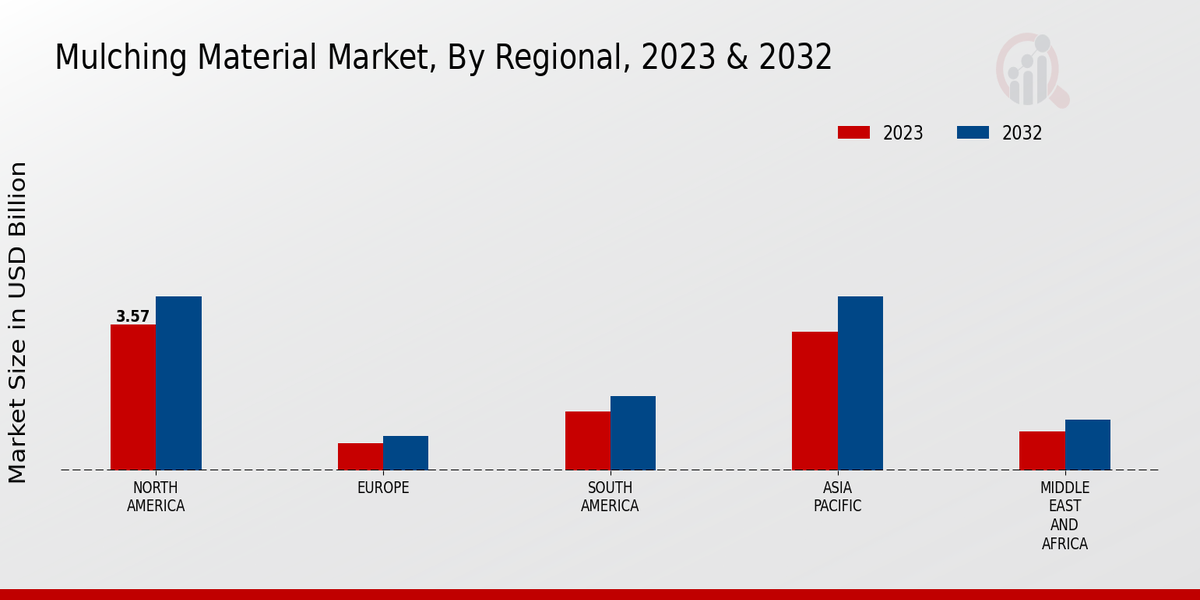Market Growth Projections
Rising Demand for Organic Produce
The increasing consumer demand for organic produce significantly influences the Global Mulching Material Market Industry. As consumers become more health-conscious, the preference for organic fruits and vegetables has surged. Mulching materials, particularly organic options, are essential for organic farming practices, as they help maintain soil quality and enhance crop yields. This trend is reflected in the market's growth trajectory, with a projected compound annual growth rate of 2.42% from 2025 to 2035. The alignment of consumer preferences with sustainable agricultural practices is likely to bolster the demand for mulching materials, further driving market expansion.
Sustainable Agriculture Practices
The Global Mulching Material Market Industry is increasingly driven by the adoption of sustainable agricultural practices. Farmers are recognizing the benefits of mulching materials in conserving soil moisture, suppressing weeds, and enhancing soil health. For instance, organic mulches such as straw and wood chips not only improve soil fertility but also contribute to carbon sequestration. As a result, the market is projected to reach 10.5 USD Billion in 2024, reflecting a growing awareness of environmental sustainability among agricultural stakeholders. This trend is likely to continue, as more farmers seek eco-friendly solutions to improve crop yields while minimizing their ecological footprint.
Government Initiatives and Support
Government initiatives play a pivotal role in shaping the Global Mulching Material Market Industry. Various countries are implementing policies and providing financial incentives to promote the use of mulching materials in agriculture. For example, subsidies for organic mulching materials encourage farmers to adopt these practices, leading to improved soil health and increased agricultural productivity. Such initiatives not only support farmers financially but also align with national goals for sustainable agriculture. As a result, the market is expected to witness steady growth, potentially reaching 13.6 USD Billion by 2035, driven by ongoing government support and favorable regulations.
Climate Change and Its Impact on Agriculture
Climate change poses significant challenges to agriculture, thereby influencing the Global Mulching Material Market Industry. As weather patterns become increasingly unpredictable, farmers are seeking effective strategies to mitigate the impacts of climate variability. Mulching materials serve as a practical solution by regulating soil temperature and moisture levels, thus enhancing crop resilience. The growing recognition of these benefits is likely to drive market growth, as farmers adapt to changing climatic conditions. This trend underscores the importance of mulching materials in ensuring food security and sustainable agricultural practices in the face of climate change.
Technological Advancements in Mulching Materials
Technological advancements are transforming the Global Mulching Material Market Industry by introducing innovative mulching solutions. Developments in biodegradable and synthetic mulching materials enhance their effectiveness and sustainability. For instance, the introduction of biodegradable films made from renewable resources offers a viable alternative to traditional plastic mulches, reducing environmental impact. These innovations not only improve crop performance but also align with the growing emphasis on sustainability in agriculture. As the market evolves, the integration of advanced materials is expected to attract more farmers, contributing to the overall growth of the industry.















